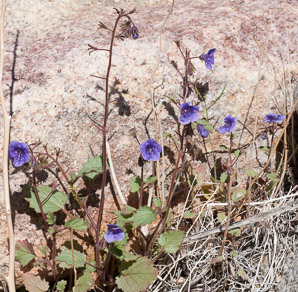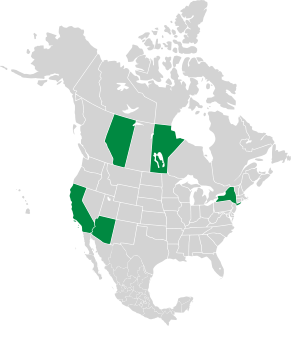
|
Phacelia campanularia A. Gray Desertbells, desert bell, desert bluebells
Desert bluebells are natives of the Mojava and Sonoran deserts. Identification: Plants are up to 1½′ (50 cm) tall, but usually much lower. Leaves are dark green, hairy, heart-shaped, with coarse teeth. Stem and leaf veins are reddish, and hairy. Flowers are bell-shaped, ½-1½″ (1.5-4 cm) around, with five petals, and are deep blue to purple. Online References:
Southeastern Arizona Wildflowers and the Plants of the Sonoran Desert George and Audrey DeLange's Arizona wildflower site The Lady Bird Johnson Wildflower Center The Mindbird Maps and Books unofficial Mojave National Preserve site
Phacelia campanularia description by Thomas H. Kent, last updated 25 May 2020. © FloraFinder.org. All rights reserved. |
2/28/2010 · Anza-Borrego Desert State Park, California · ≈ 14 × 9″ (35 × 23 cm) Range: Zones 7a-10b:
|



